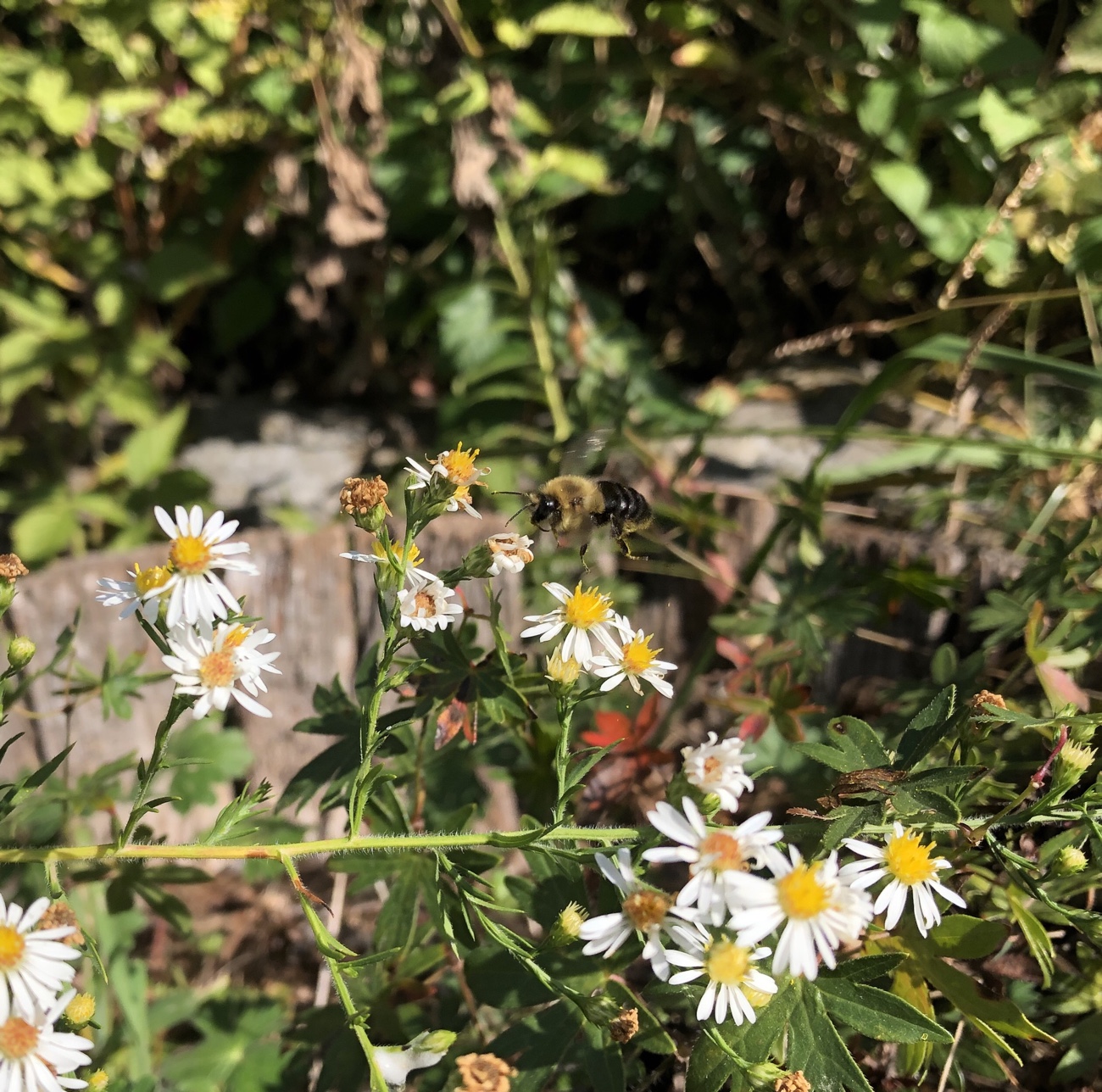
As the weather’s grown cooler here, I wonder how long the butterflies and bees will be around. Few flowers still remain, mostly what people would consider to be “weeds”, like thistle and a low-growing bush with miniscule white flowers. Pesky to some, these are important food sources for pollinators.
The bush I mentioned grows all over the property, but it’s largest near the house. And while it may not be an attention-grabber, it has a lovely fragrance that caresses the olfactory organs, no doubt in pollinators as well as people.
Yesterday, the bushes were humming with activity: bees of all sizes and shapes moved quickly and methodically from bloom to bloom; myriad butterflies also visited, appearing more leisurely in their efforts. From just a few minutes’ worth of watching, it was clear that these creatures depended on this weed’s blooms for sustenance.
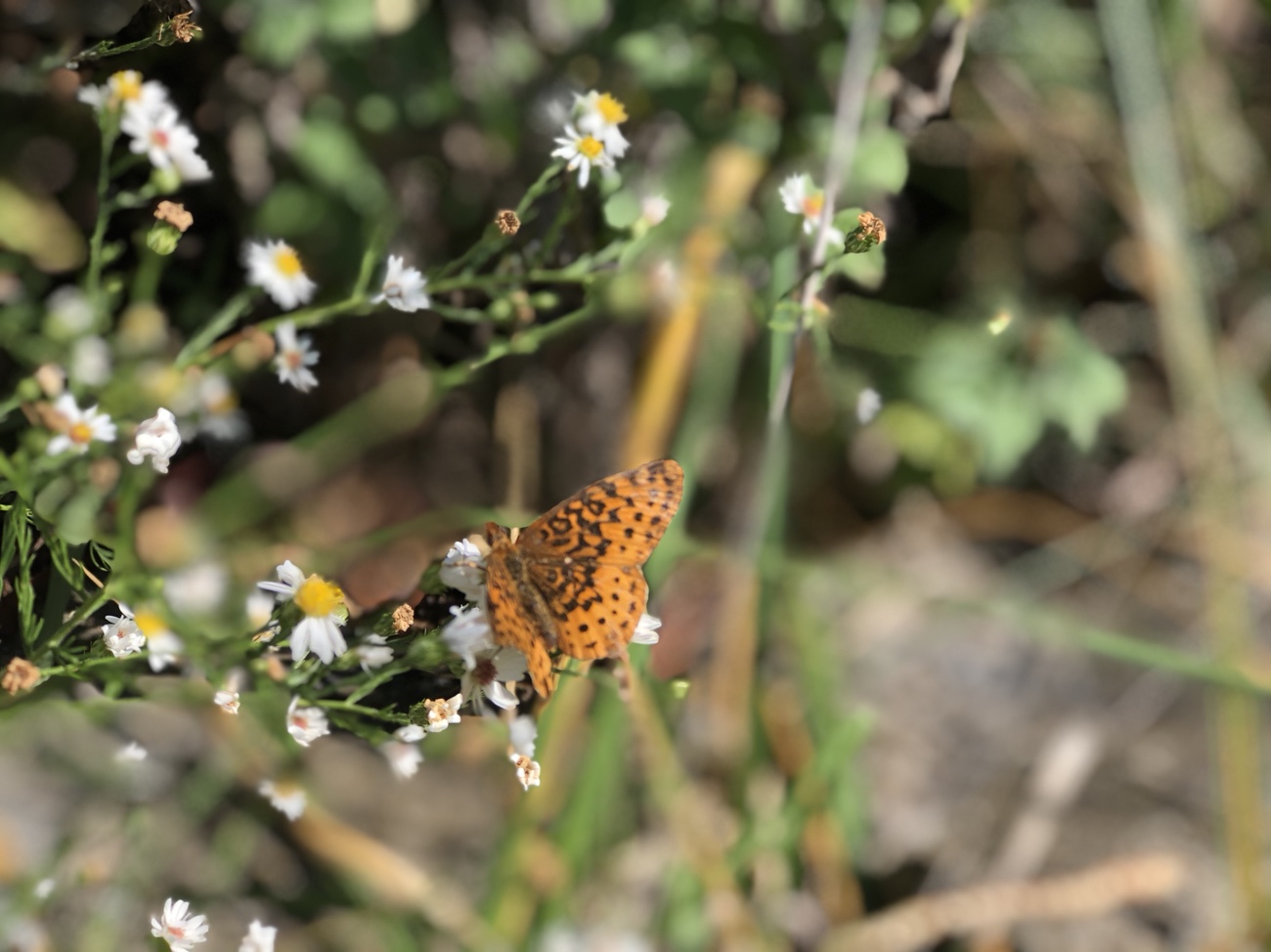
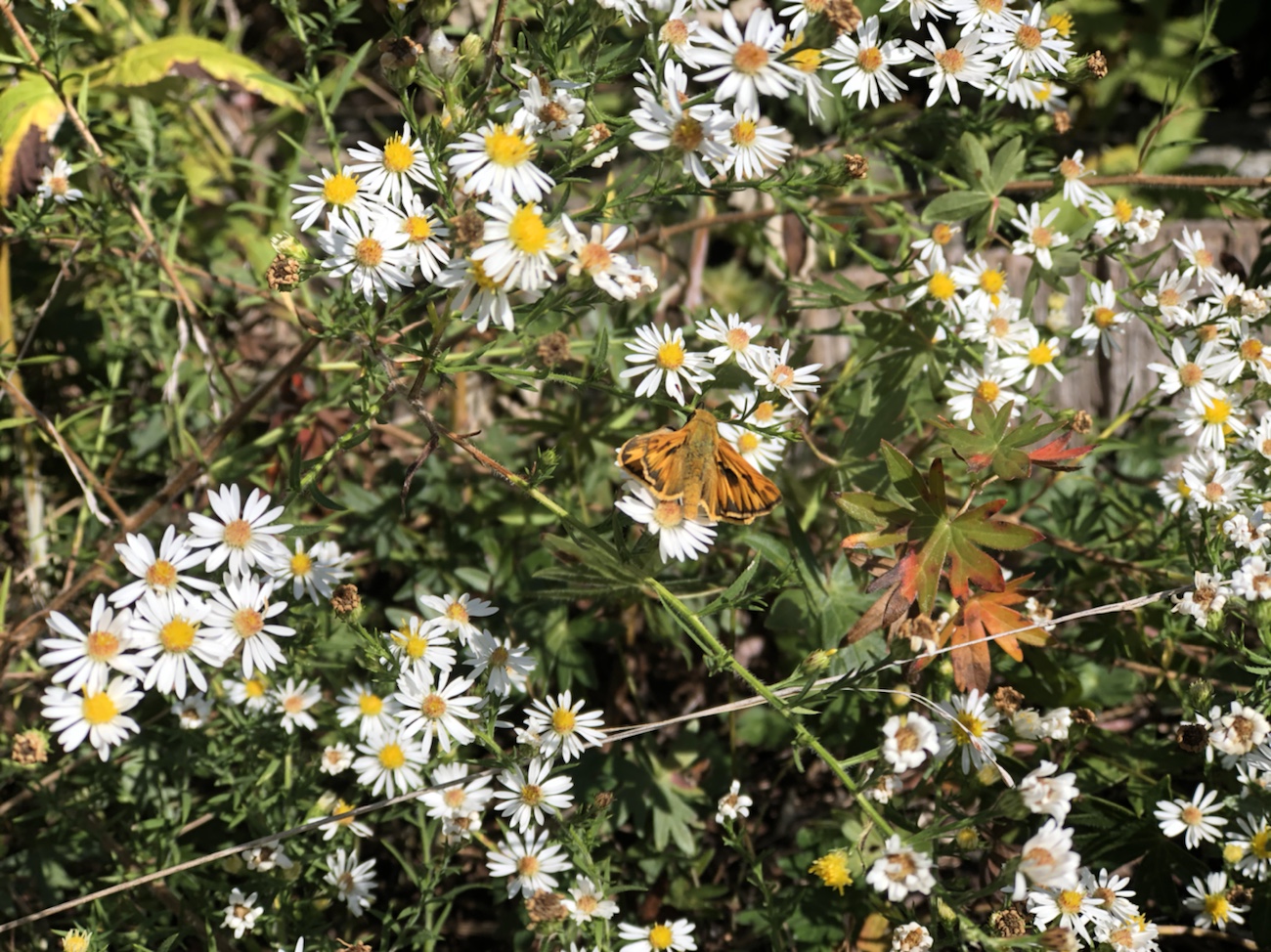
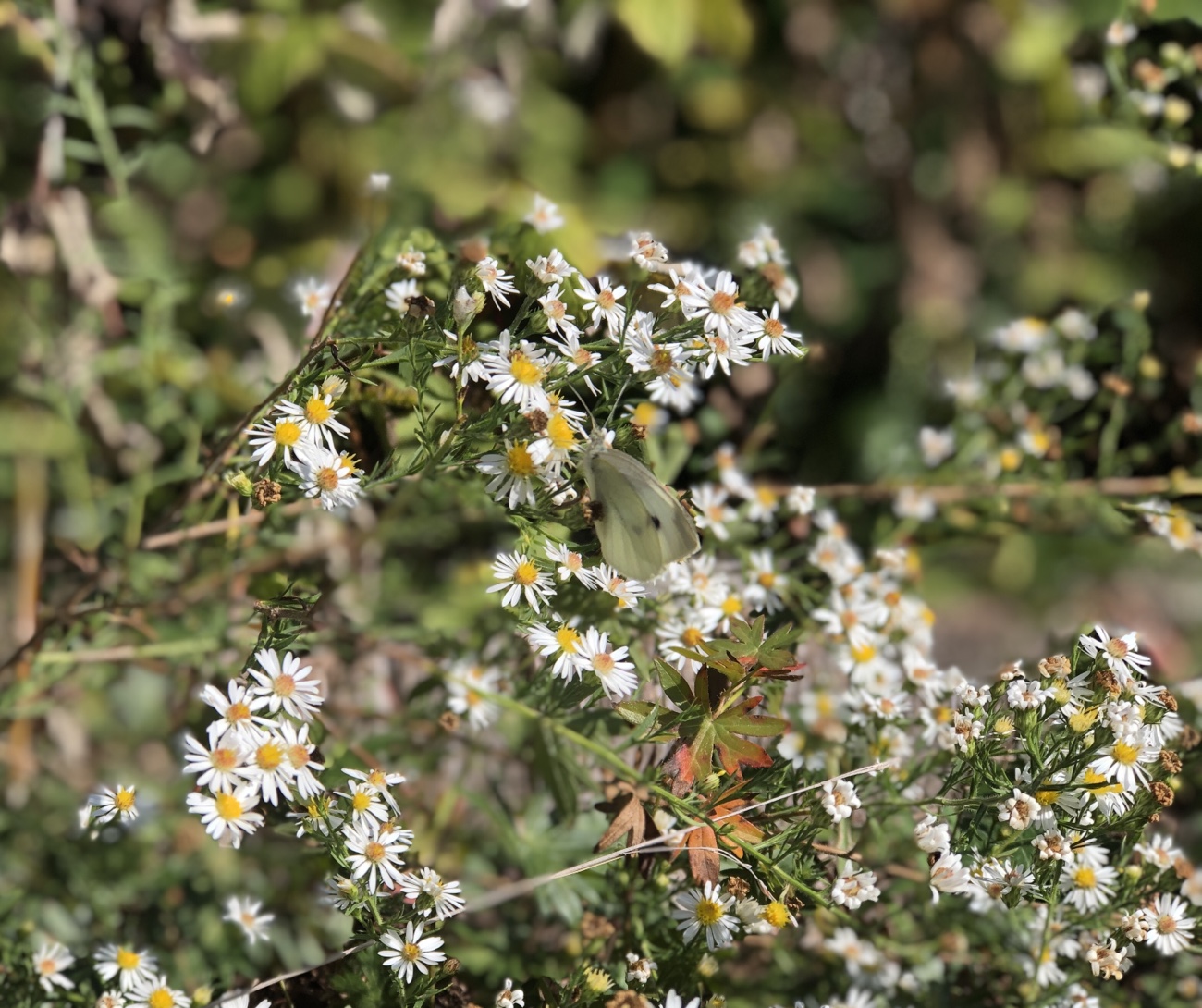
If you’re not watching, you probably wouldn’t even know that this was going on, practically right under your nose. You might try to eradicate the weed by pulling it up or, much worse, spraying it (and anything on it) with harmful chemicals. And without this unassuming plant, those important insects in the ecosystem will have to work that much harder to find food – as winter approaches, that may mean bees won’t survive because they don’t have enough reserves.
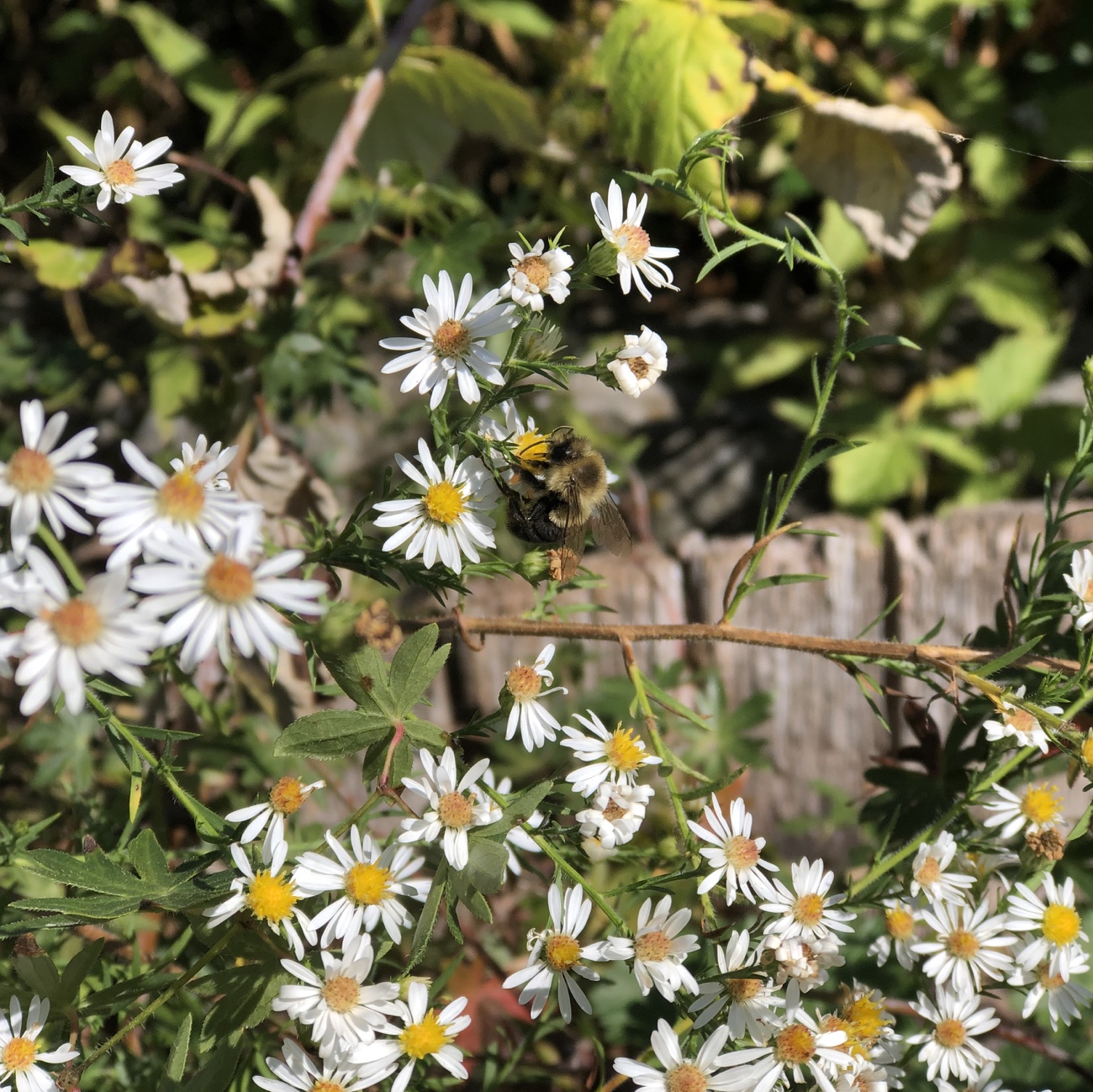
In a world where many insects are fighting an uphill battle to survive, a little consideration goes a long way. Before you uproot (or spray) a weed, think about its potential usefulness to important creatures, like pollinators, versus actual harm the weed may do (e.g., is it toxic to livestock that could access it?). Is it really causing harm, or is it merely an annoyance/eyesore that you can live with to help pollinators out? And before you think that your efforts don’t matter “in the grand scheme of things”, know that every little bit counts.
Learn more about how to help pollinators here.
